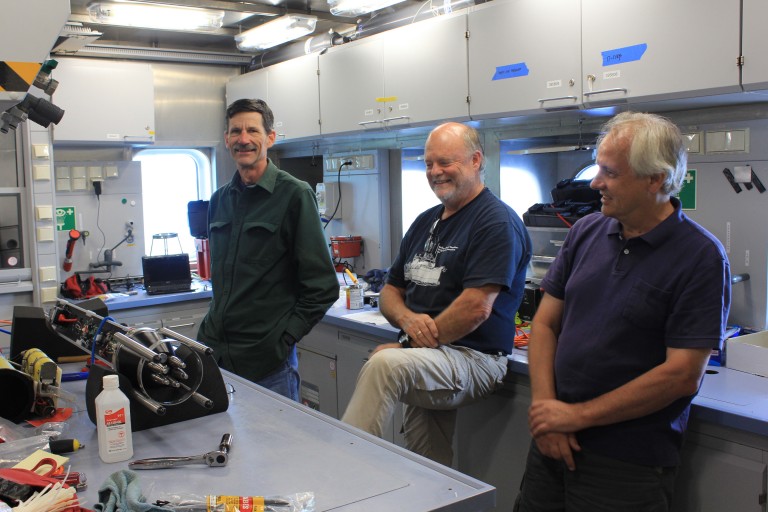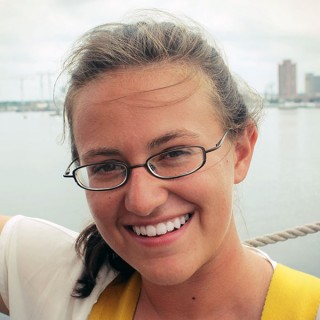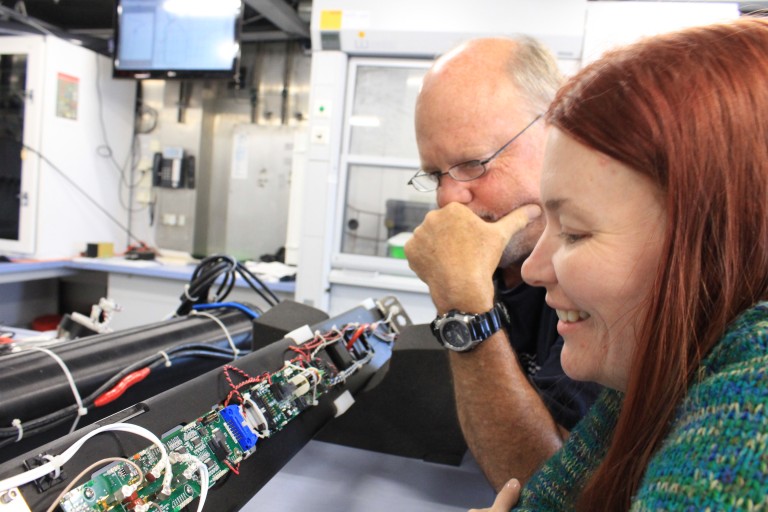
How even ideal conditions at sea can be a challenge for a research vessel.
The R/V Falkor is currently stationed at 1° North and 170° West, heading North, conducting a 10-day time-series, looking at small scale mixing throughout the Equatorial Pacific. Jennifer and I have been onboard for long enough to realize that conducting science at sea isn’t always smooth sailing. Life at sea can be rough on the ship and the instruments, requiring a skilled crew and an experienced science team for deployments to run efficiently.
Deploying instrumentation in bad weather
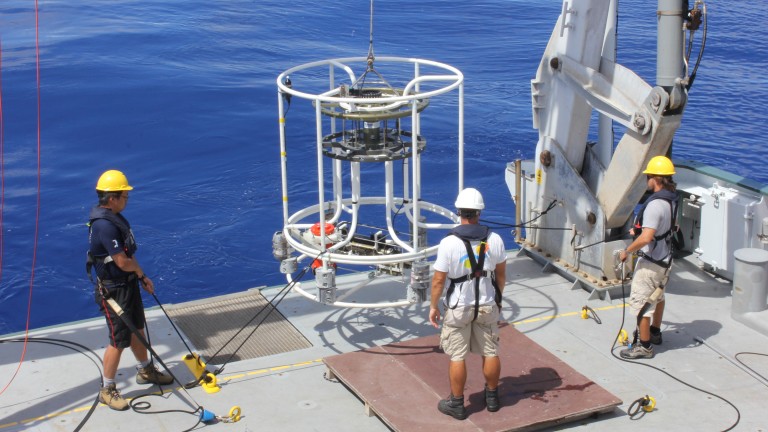
During every instrumentation cast on Falkor, scientists and crew members alike are required to wear proper Personal Protection Equipment (PPE) while the machinery is being operated. There is always one person in charge, overlooking the entire operation, working with two tagline people who’s job is to keep a steady tension on the CTD Rosette in order to prevent swinging. Even in the calmest seas, everyone on the back deck is prepared for bad weather. The tag-line operators are required to wear life jackets and a belt, and are strapped onto the deck. During tricky maneuvers or large seas, there will be an officer on the back deck who is there to oversee operations and lend an extra hand when needed.
In large seas, as the stern of the ship moves over the waves, the tension in the wire can transition from being very heavy to completely slack. In addition, when the instrument comes out of the water, the swing of the ship can amplify the swing of the instrument. The person in charge of the aft deck is trained to identify when situations are getting dangerous and can lower the CTD back into the water to control the swing and wait for a more suitable time to recover. Safety is always at the forefront of the work on Falkor, and the team has the training needed for any situation.
The officers on the bridge also keep a close watch on the wind and seas during deployment. As the boat moves through a wave, the ship can get surged in different directions. Any backwards motion can potentially place the stern on top of the instrument, so a vigilant watch is needed to avoid these sudden surges. Luckly, we have had fairly calm seas and great weather on the trip so far.
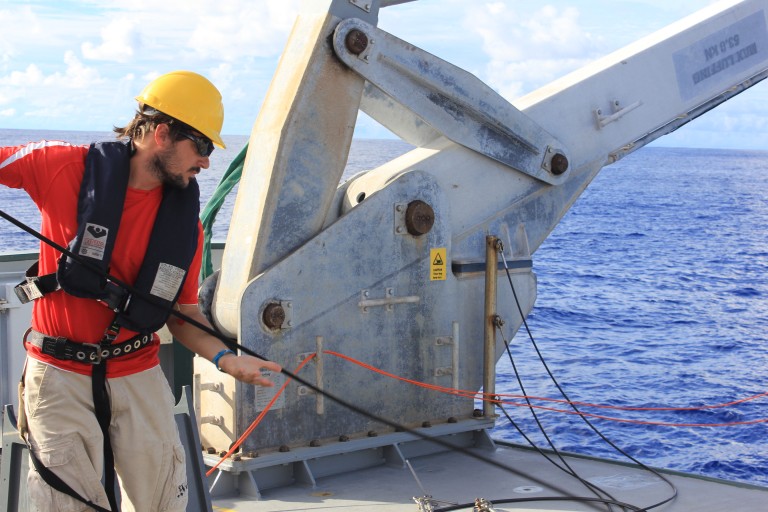
Instrument Troubleshooting
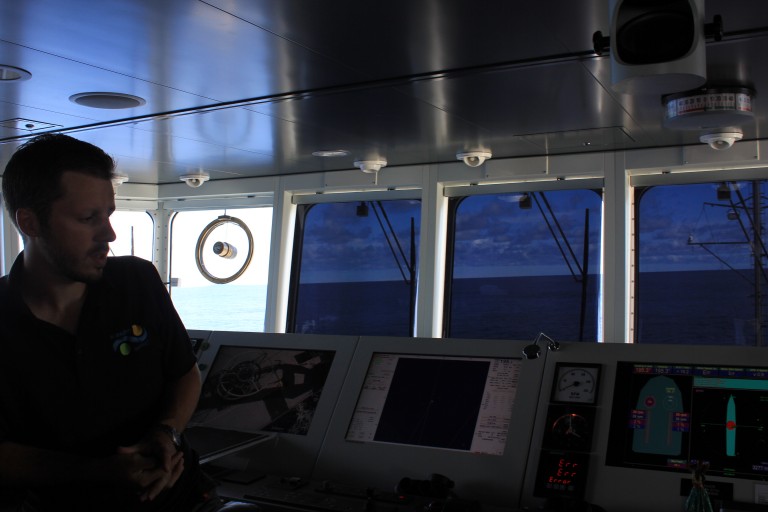
When preparing for a cruise, the scientists must take into account that the ship is essentially its own remote island. Anything that could potentially be needed during the trip must be foreseen and packed before departure. Even if you are very prepared, the sea is often unforgiving and instruments can be lost, stolen, or damaged by the motion of the waves.
During the last few days, our Vertical Microstructure Profiler (VMP) has been giving us numerous error messages while being deployed. The dedicated and experienced science team has been working hard to identify and fix the problem. So far, we’ve fixed and replaced both the cable termination as well as a slash in the cable, but no luck with the bad buffers. However, with a crew of excellent engineers and experienced science team, we will not give up on the VMP. The ship’s crew and the scientists will continue to get the VMP functional again, a situation that requires much troubleshooting, ingenuity, and patience. Every day at sea is a different challenge and the Falkor crew and science team are always ready, enjoying the time we have in the Pacific.
